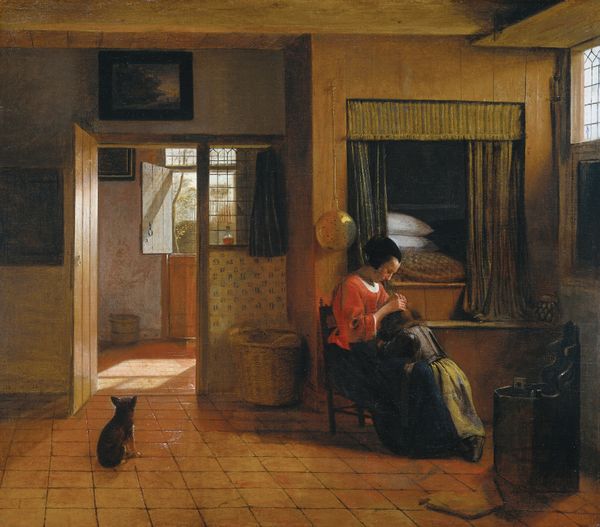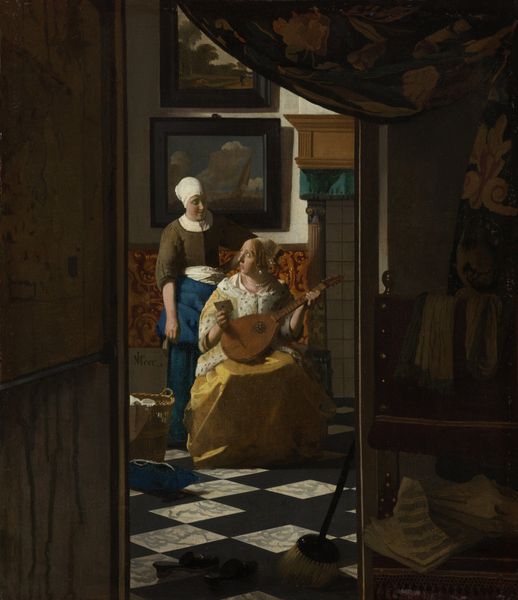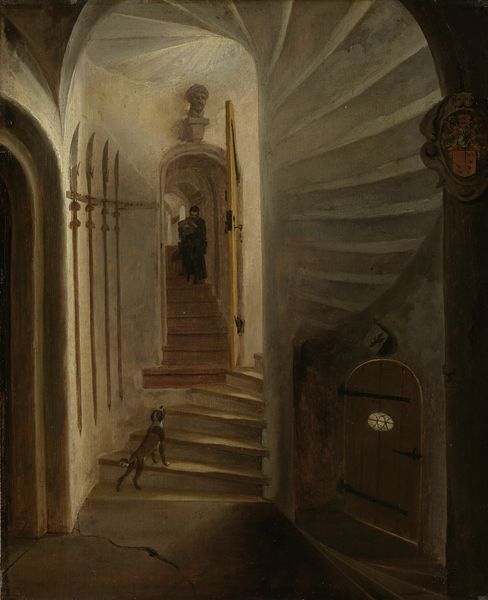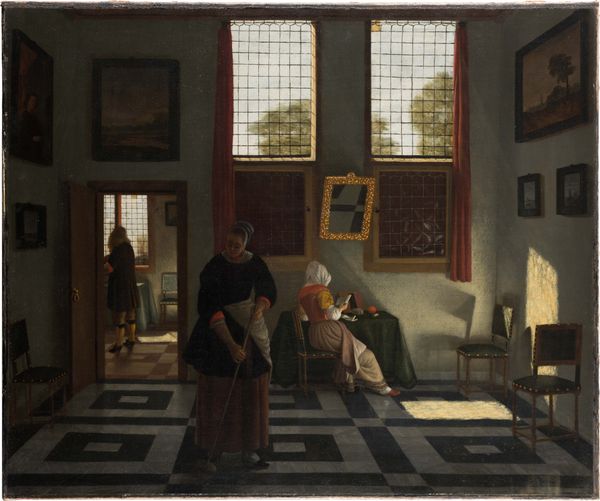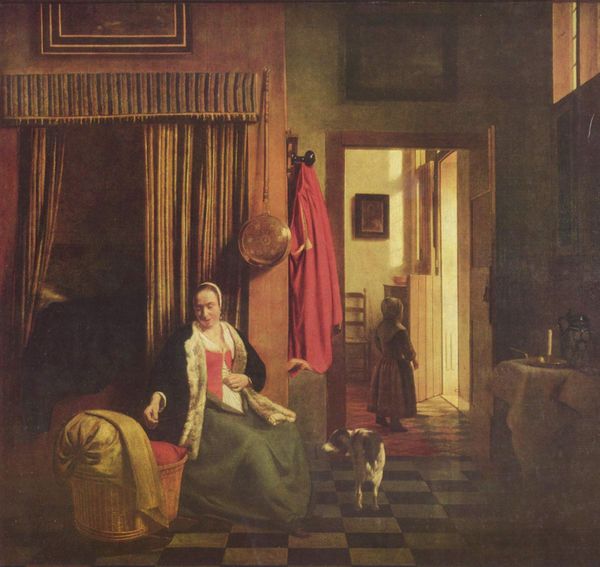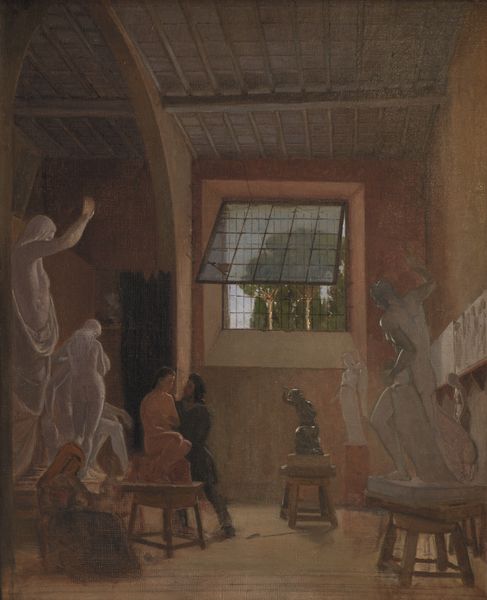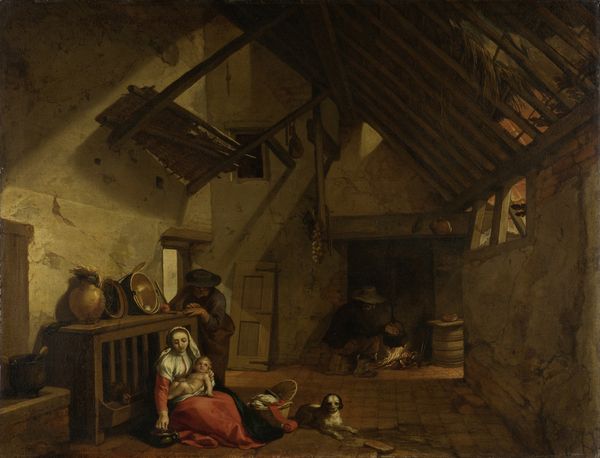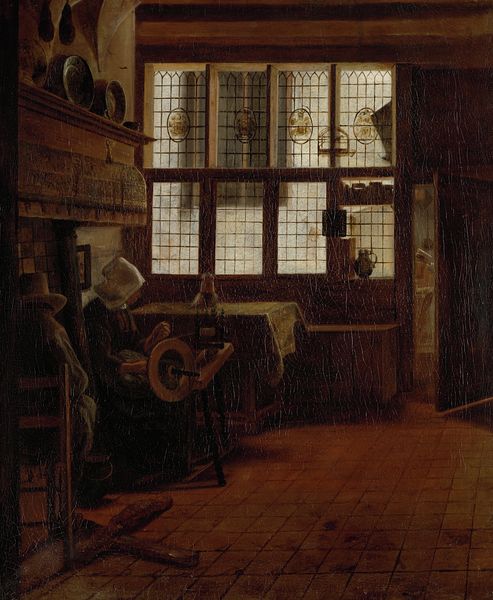
oil-paint
#
dutch-golden-age
#
oil-paint
#
genre-painting
#
realism
Dimensions: overall: 55.7 × 41.3 cm (21 15/16 × 16 1/4 in.)
Copyright: National Gallery of Art: CC0 1.0
Curator: Look at the contemplative air of Jacobus Vrel's "Young Woman in an Interior" from around 1660. There’s such a stillness achieved with oils on canvas. It draws you in. Editor: It certainly does. The color palette is subdued, dominated by browns and muted blues, lending it a pensive and introspective mood. Is it just me, or is there also a palpable sense of loneliness permeating the scene? Curator: Perhaps that solitude is a key aspect of the Dutch Golden Age interest in the individual, but also their relationship with the domestic sphere. See the precisely arranged plates above the doorway? Each element signifies order, but it doesn’t negate that quietness. Editor: The emphasis on order speaks volumes about the societal values of the time. The Dutch burghers valued domesticity, stability, and prosperity. Notice how the open window alludes to the outside world while the figure remains enclosed in a carefully curated interior, reflective of their desire to control their world, their image. Curator: Absolutely. The window—a traditional symbol of both opportunity and captivity—highlights this push and pull. But consider the composition as a series of frames within frames—the doorway, the chair—each guiding the eye back to the figure, a visual reminder of societal expectations, the enclosed role of women, as they evolve, generation to generation. Editor: An excellent observation! Also, in contrast to much of the era’s Dutch Realism, there's an almost unsettling abstraction. Is the woman simply lost in thought, or is she emblematic of broader cultural tensions between individual identity and prescribed roles? Curator: Precisely. Genre paintings such as these gave artists an opportunity to address unspoken desires, anxieties, class aspirations or limitations. It reveals how the art of the era negotiates societal norms through nuanced portrayals. Editor: So, what are we ultimately left with? A meditation on domesticity? An allegory of identity and circumstance? Perhaps Vrel offers a compelling snapshot of a society in flux. Curator: Indeed. By investigating those small visual nuances, and how domesticity can contain an echo chamber. The art speaks of then and maybe of now.
Comments
No comments
Be the first to comment and join the conversation on the ultimate creative platform.
